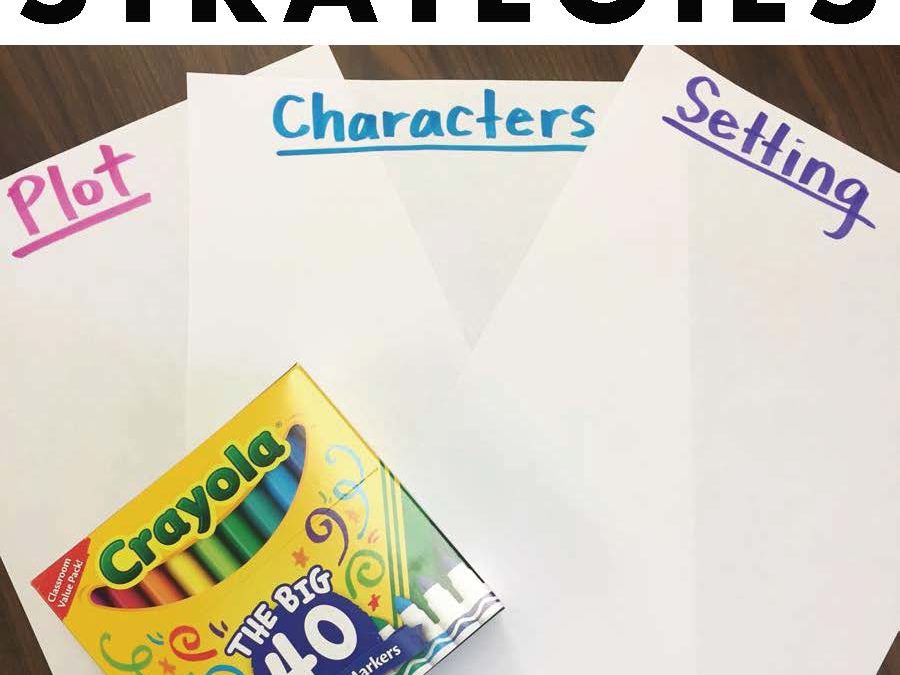Student Engagement Strategies
I always thought that getting students engaged in lessons had to involve a lot of prep time. Finding an activity, printing it, laminating it, and cutting it out… But I have learned that student engagement strategies don’t have to take a lot of prep time and they can be so fun and meaningful to students. I’m sharing my go-to student engagement strategies that get my students actively involved in their learning.
List of Student Engagement Strategies
Strategy 1: Student Whiteboards
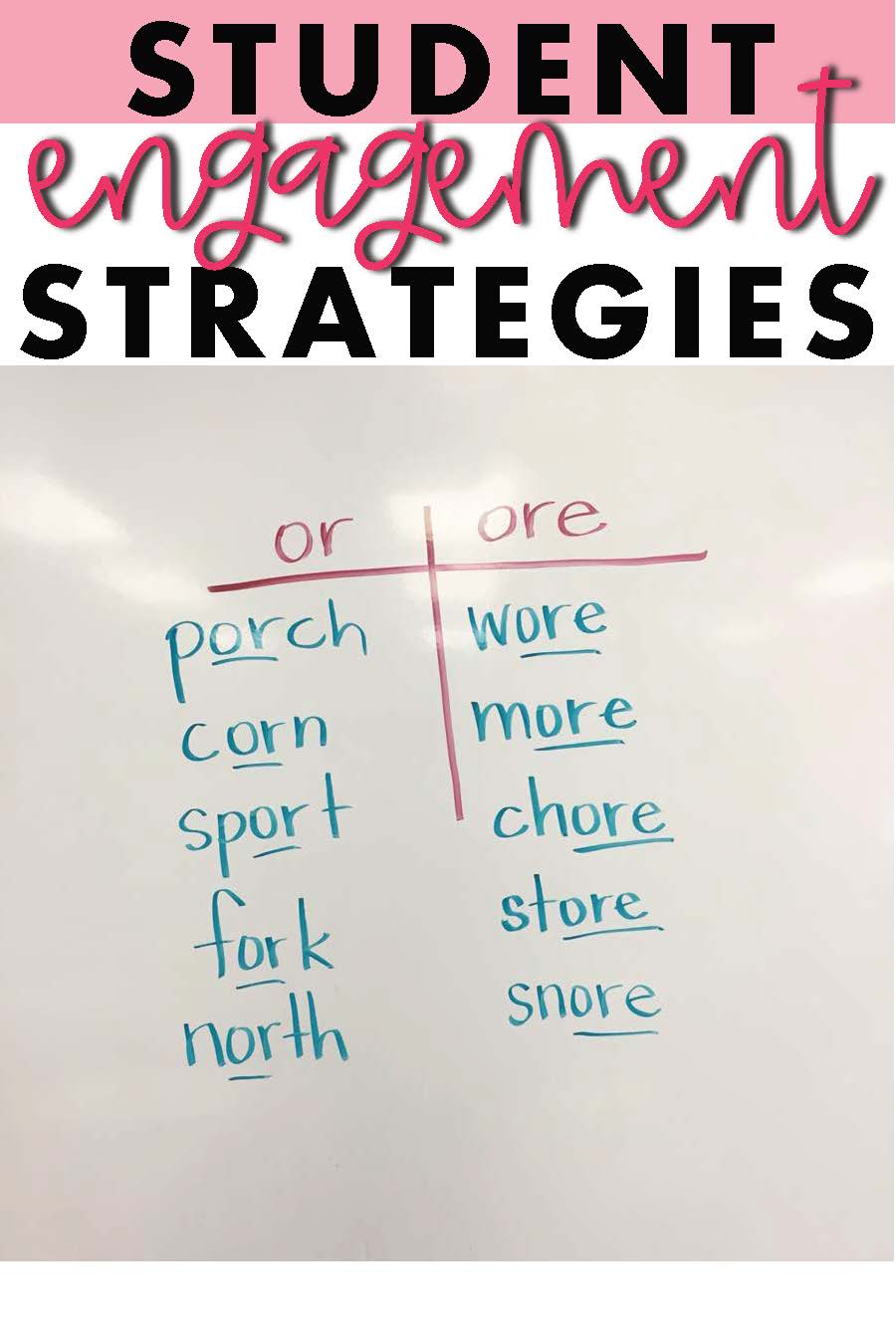
Whiteboards… Yes, it can be that simple! I love using whiteboards in my classroom because I don’t have to make any copies! It’s a time saver for teachers and students love writing with markers. Here is how I use whiteboards daily in my classroom.
I use them to practice sound spelling for phonics lessons. After a quick mini lesson, I excuse students to grab their whiteboards from their cubbies and meet me ready at their desks. I say a word that goes along with our phonics patterns, we count out the sounds, and write the letters for the sounds. Some days we add a chart where I say a word and the students have to figure out where the word goes according to its spelling.
After practicing spelling words, I say a sentence with some of the phonics spelling pattern words. The students repeat it a couple times and then they write it. They especially love when the sentence is silly! As the students are writing it, I will write it on the board and cover it with a piece of paper. After a minute or so, I uncover my sentence and students make any corrections needed.
Another thing I usually add in the lesson that students LOVE is I’ll have them come up with their own sentence using the phonic spelling patterns. I’ll list example words up on the board and give them a couple minutes to write a sentence with as many of those words as they can. The students love to share these sentences once they are done so I give them a minute or so to share with a partner.
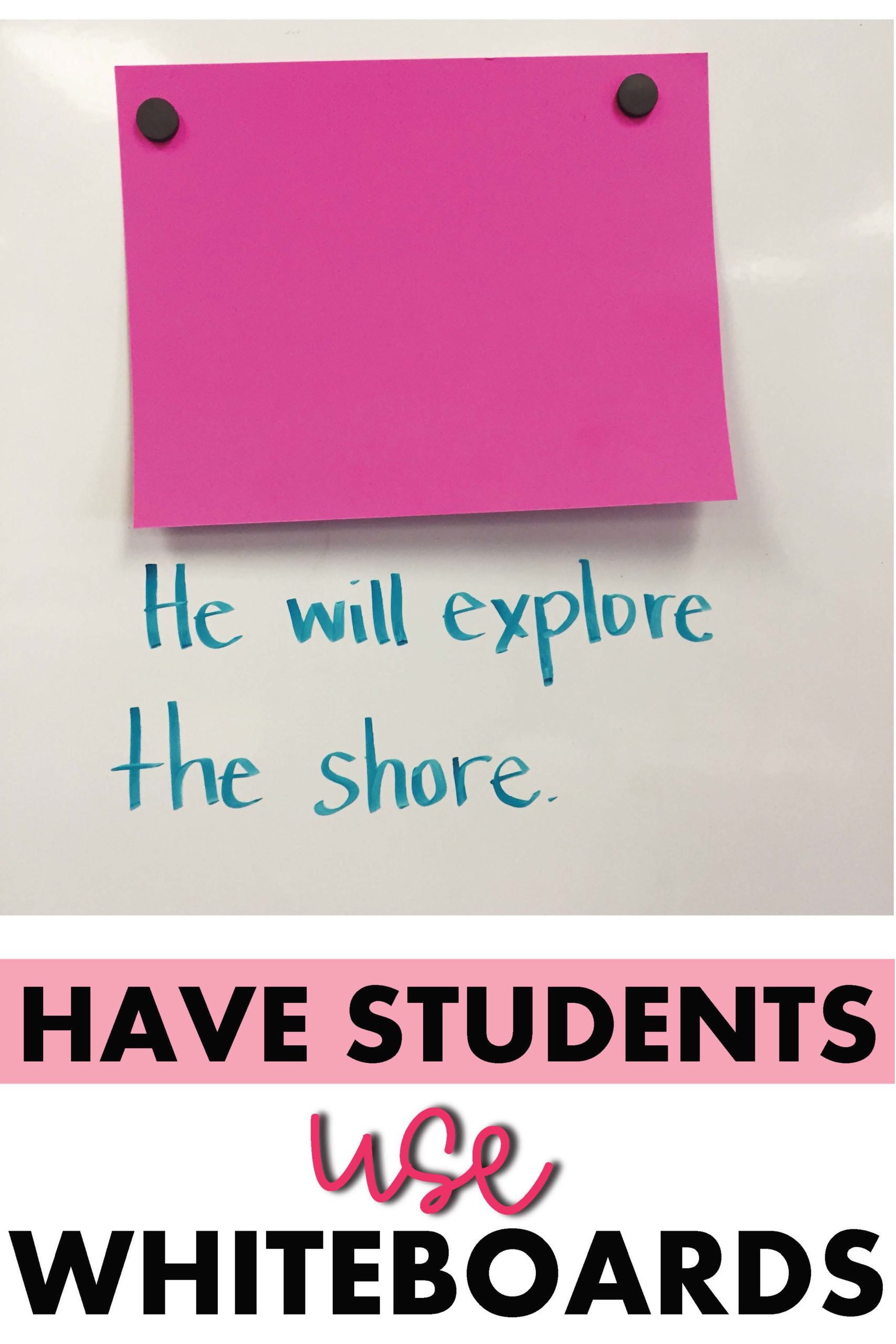
This student engagement strategy can be used for so many subjects! Another way I use whiteboards is in math. First, I partner up my students. Then I put a math problem on the board. One student is the “writer” and other tells the “writer” what do and write to solve the problem. Then they switch for the next problem. I love how it gets them talking about math!
Strategy 2: Feed the Cat
Just like whiteboards, this strategy can be used with so many different subjects. Here is how I have used it in my classroom. I bought a cute storage bin “cat” from Walmart. But you could use a box or a filing folder that you tape a picture of a cat on or any animal really.
Then I cut blank papers into sixths or eighths to get lots of little papers. Then I put pictures that represent phonics pattern words for the week on a PowerPoint slide. Students get a little piece of paper and write a sentence with one of the words. Then they feed it to the cat! I love it because it gets them up and moving out of their desks. Students really get going when you give a numerical goal of how many sentences the cat needs to be full. I love seeing them play into it so much!
This last Valentine’s Day we did this with feed the cat. I had the students write their sentences on a heart. I told them that the cat only eats sentences with capitals, periods, and “ar” words. I have never seen my students write in complete sentences so fast. It was great!
Strategy 3: Make Posters
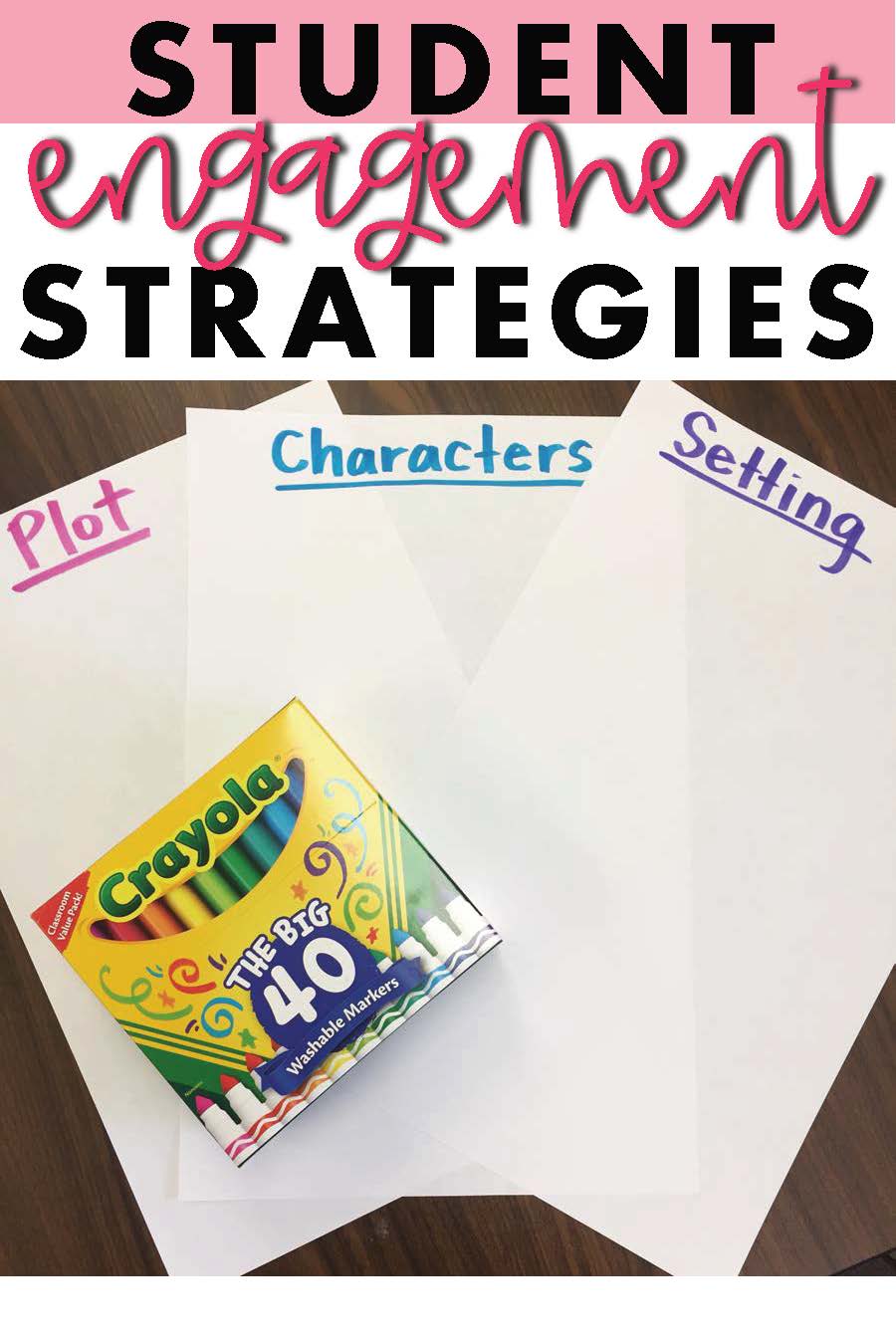
Just letting my students use markers gets them excited. But also give them a big piece of paper and they think it is the coolest thing ever. I love to have my students make posters as an engagement strategy because they get so excited! Plus, it’s little prep for me. All I have to do is set out paper and markers. Here is how I use posters as a student engagement strategy in my classroom.
This week we have been learning about story elements: characters, setting, and plot. We read our story from the curriculum and as we read we talked about the characters, setting, and important events in the story.
Then I modeled how to create a poster for either characters, setting, or plot. We had recently finished Matilda as our class read aloud, so I modeled with that. The students helped me think of the characters and what I could say about those characters. They laughed and giggled as they told me what to draw for the characters. We did the same for the setting and plot posters.
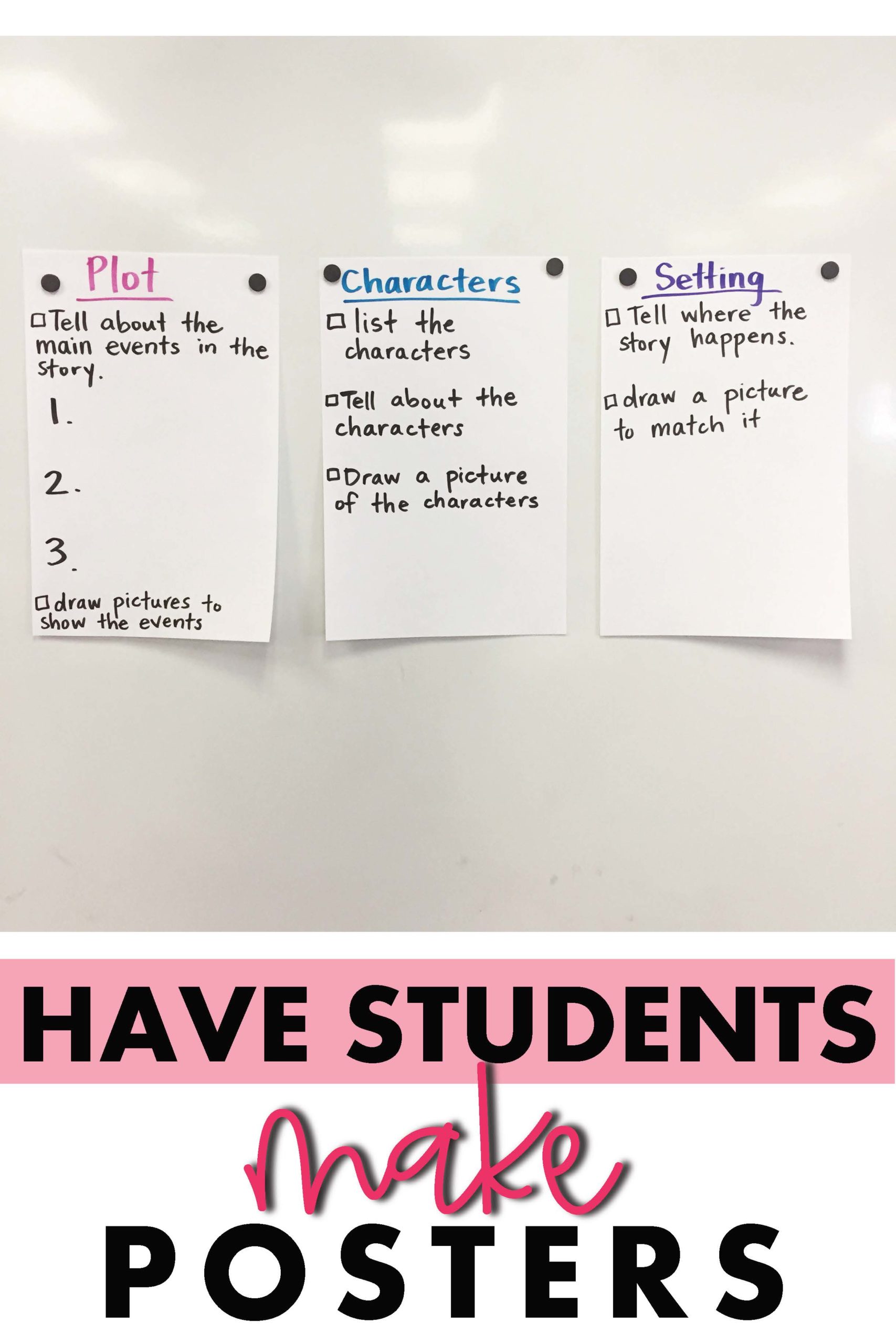
I showed my students a checklist of what I would be looking for on each poster and they were ready to go! When doing posters, I have my students work with a partner. Then they can support each other, talk things out, and help each other spell words. Many students finished their posters early, so I told them pick a different story element and get started on it on the back.. I heard words like “Yes! Let’s do plot!” and it made my teacher heart so happy.
We ran out of time, but I would have had students get in a group so each group had a character poster, a setting poster, and a plot poster. Then each partnership would talk about and share their poster.
Strategy 4: Turn and Talk
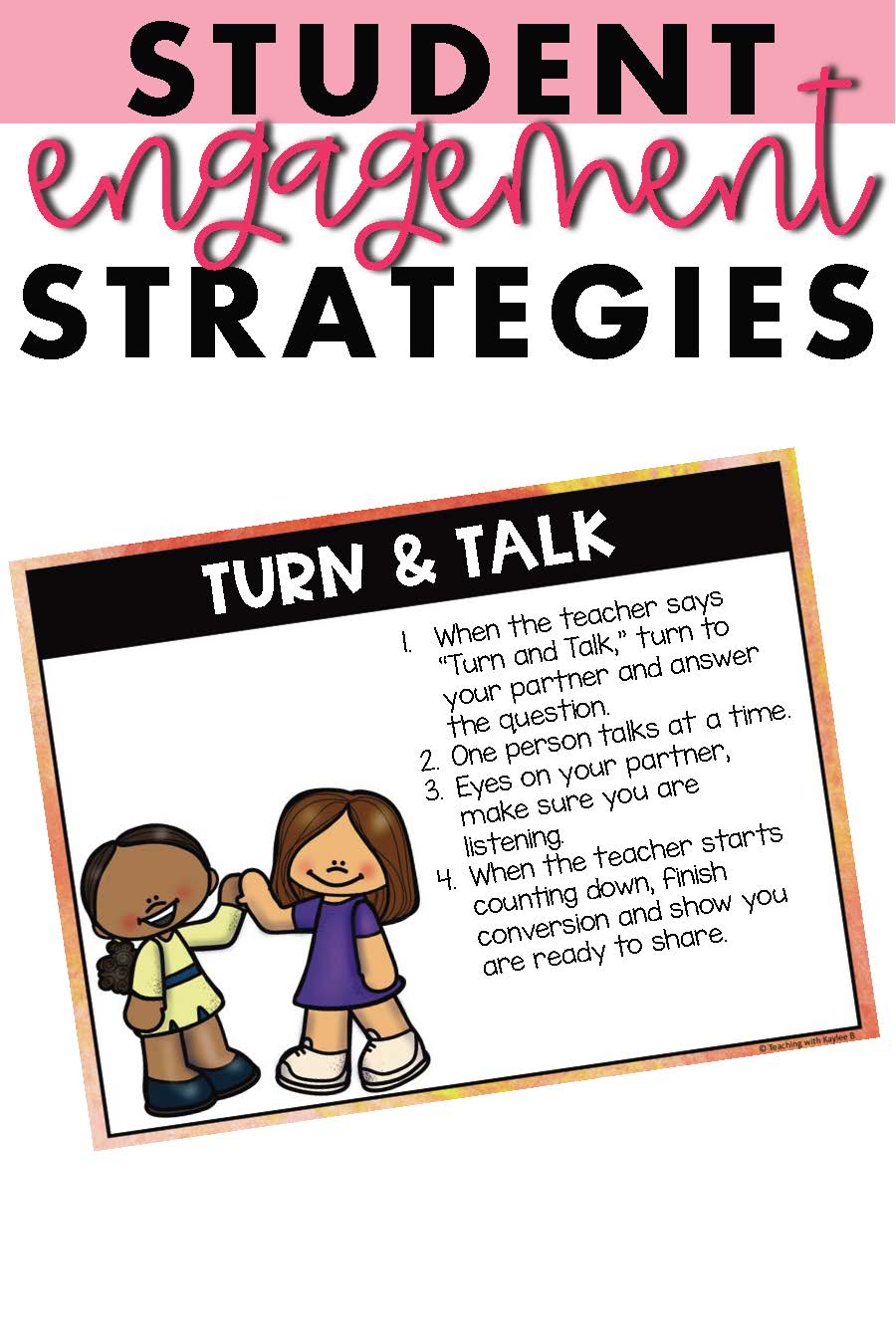
I love using Turn and Talk in my classroom because it is an instant way to get 100% of your class engaged in your lesson. Usually if I just ask a question, I get my same 3 or 4 kids with their hands up. But if I use a Turn and Talk, I get so many more! Here is how I use it in my classroom.
First, I really worked hard at the beginning of the year to make this a routine. Students know who their Turn and Talk partner is. They know what to do if their partner happens to be gone. We talked about being polite and listening to their partner. We practiced what to do when both partners had finished speaking. Students know when I want the class to start finishing their conversion and have their attention back at me. Now I can just ask a question and say “Turn and Talk” and students know exactly what to do. I actually have a PowerPoint where I put all the steps to our classroom routines. Here is the link.
I use this strategy heavily when we are learning new vocabulary or when we are reading our comprehension story together.
For vocabulary, I will say a word and then have the students tell their partner everything they already know about the word or what they think the word means. Then we will come back together and talk about it. Once clarifying the meaning, I will have the students Turn and Talk again, giving their partner examples about the word.
Turn and Talk is simple, but it is powerful. Students love to talk. So you might as well get them talking about the things you are learning!
I hope you have found this list of engagement strategies helpful. These four student engagement strategies are so great because they are so flexible! You can use them with almost any grade or subject. Plus, they involve little prep for the teacher and students love them. My students also love playing games in our classroom. I have a blog post all about easy to make math fact games. Find the link here.
I personally found that the more I increase student engagement in lessons, the more joy my students and I find at school. We look forward to coming to school each day. Are you looking to further increase student engagement in your classroom? I have a free workbook for you! I’m sharing the 7 Steps to an Engaged Classroom. Find the link here.

